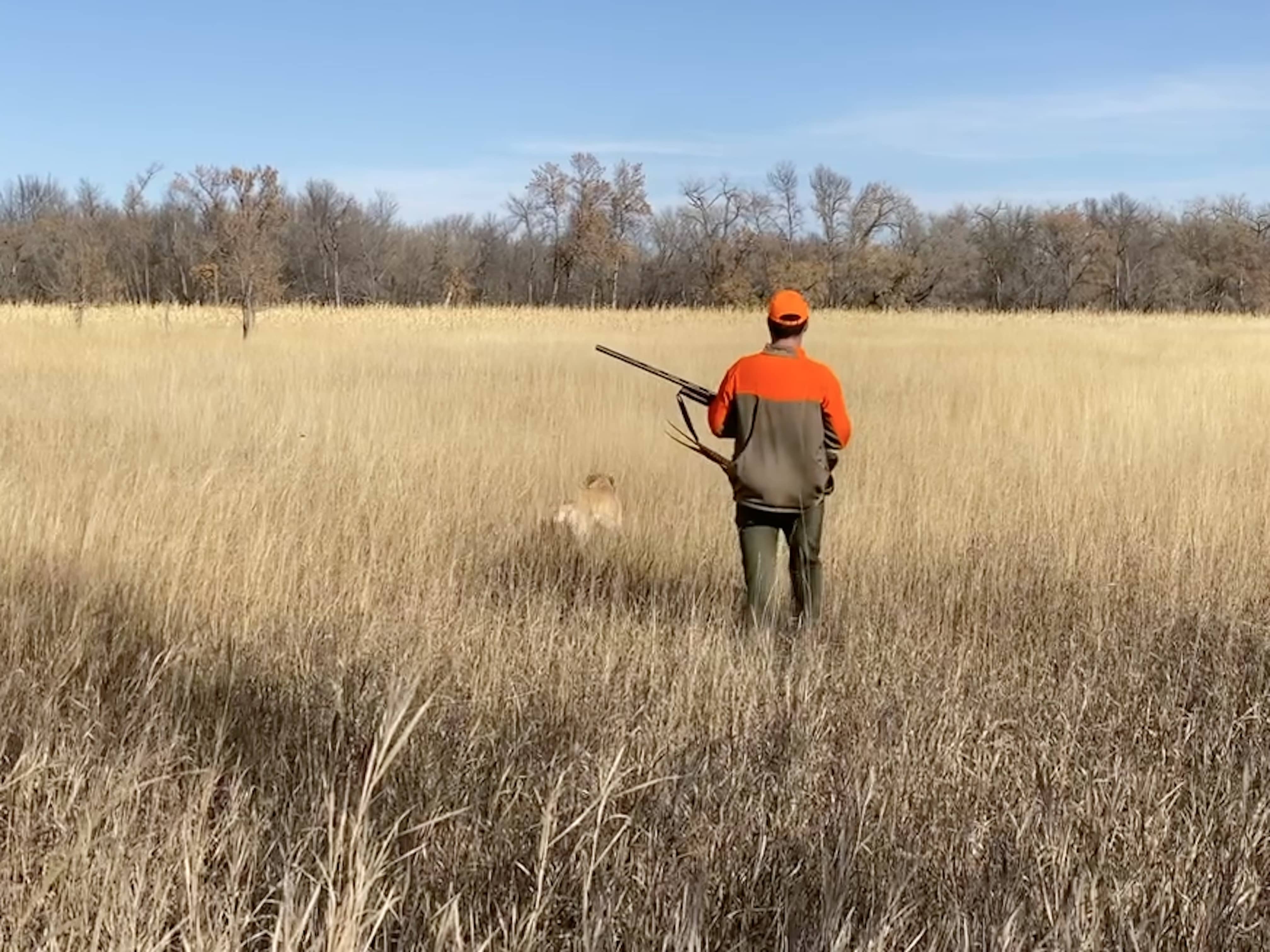
The author and his lab work a space of CRP implemented via the Farm Bill to preserve marginal acres and in turn provide habitat for wildlife. DEO Photo by John Bradley.
It’s Time for Congress to Follow Through on its Promise
By John Bradley
Despite the hard winter in North Dakota, North America’s most recent glacial period ended about 10,000 years ago. As the ice sheets decayed, they left thousands of shallow depressions across the northern part of the continent. Today, those potholes and kettles fill with water, either each spring or permanently, and create the important wetland and grassland habitats that have come to define North Dakota and the rest of the Prairie Pothole Region (PPR). The area is home to more than 50 percent of North American migratory waterfowl, with many species dependent on the potholes for breeding and feeding.
Regrettably, grasslands in the PPR are being converted to cropland at a rate faster than the Amazon rainforest is disappearing. This is partially because of the need to feed a growing population, but also due to government policies that over-incentivize expansion into marginal lands, with taxpayers often footing the bill for unrealized plantings. Thankfully, the 2014 Farm Bill implemented a trial program called Sodsaver. Implemented in six states, Sodsaver is designed to align cropland expansion with market demand. Simply put, if a farmer chooses to convert never-farmed, native sod into cropland, their crop insurance premium subsidy assistance is reduced for four years, or until they can prove the new cropland is productive.
Thankfully, lawmakers in our neighboring states – Senators John Thune (R-SD) and Amy Klobuchar (D-MN) – are attempting to expand Sodsaver nationwide through the American Prairie Conservation Act, which should be included in the 2023 Farm Bill. The bill would build and improve on the success of the pilot Sodsaver and level the playing field for farmers in the PPR with the rest of the country. Not only would this bill be a significant step in preserving grasslands in the United States, it would also save tens of millions of taxpayer dollars.
Just as crucially, this Farm Bill must protect funding for vital agriculture conservation programs. Farm Bill conservation programs are so popular that farmers with legitimate conservation needs are routinely turned down. Nationally, as many as 75 percent of qualified applicants are turned away, meaning demand for conservation on 13.8 million acres goes unmet because of inadequate funding every year. Agriculture conservation programs are key for farmers and ranchers and rural communities throughout North Dakota as well as around the country. Hunters remember the days of peak CRP acres and the boon those grasslands were to pheasants, grouse, turkeys, and deer. Programs dedicated to habitat, soil, and water help resolve resource concerns and enable sustainable practices that aren’t only beneficial for landowners, but for hunters and anglers, hikers, and everyone else who enjoys North Dakota’s natural beauty.
Luckily for North Dakota, $20 billion in additional funding for these critical Farm Bill Programs passed through Congress and was signed into law last year – a historic investment in private land conservation that is supported by a coalition of over 600 organizations representing ag-centered businesses, hunters, anglers, farmers, ranchers, and conservation organizations. Now, as Congress negotiates the details of the 2023 Farm Bill that could cost more than $1 trillion, it’s more important than ever that the $20 billion for conservation programs does not get cut out from the Farm Bill. Rarely are programs so broadly supported, and needed, as these.
This funding represents the largest investment in agriculture conservation since the Dust Bowl. Delivering this funding on the ground to farmers and ranchers is crucial to conserving our state’s soil, water, and wildlife so our children and grandchildren have a chance to enjoy these natural resources. Congress made a promise to deliver on this once-in-a-generation opportunity to fundamentally improve conservation across the country – now it’s time to follow through.
John Bradley is a Dakota Edge Outdoors contributing writer and the Executive Director of the North Dakota Wildlife Federation.
